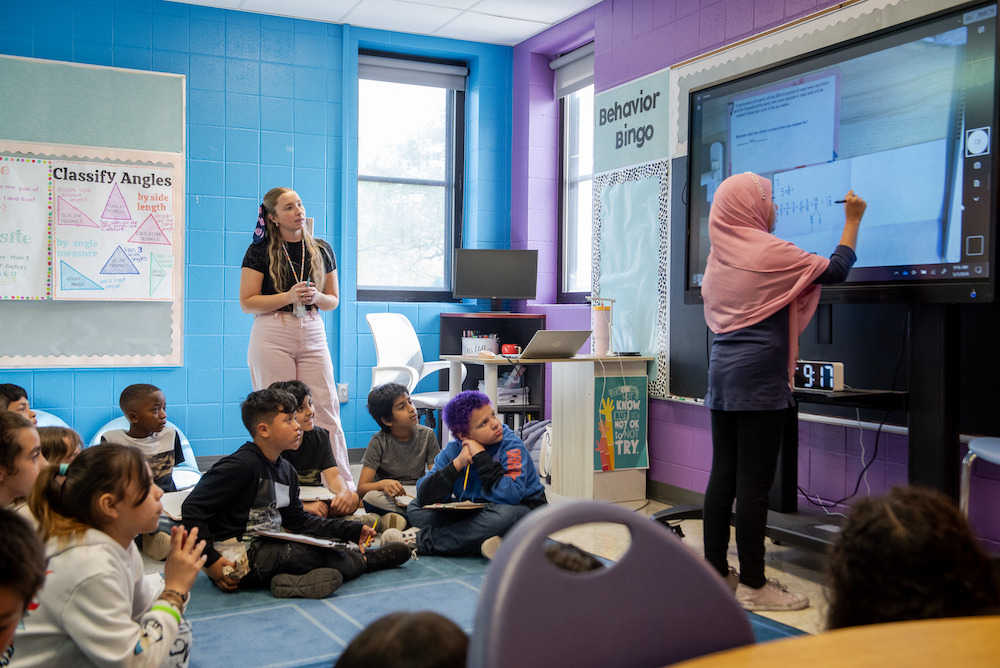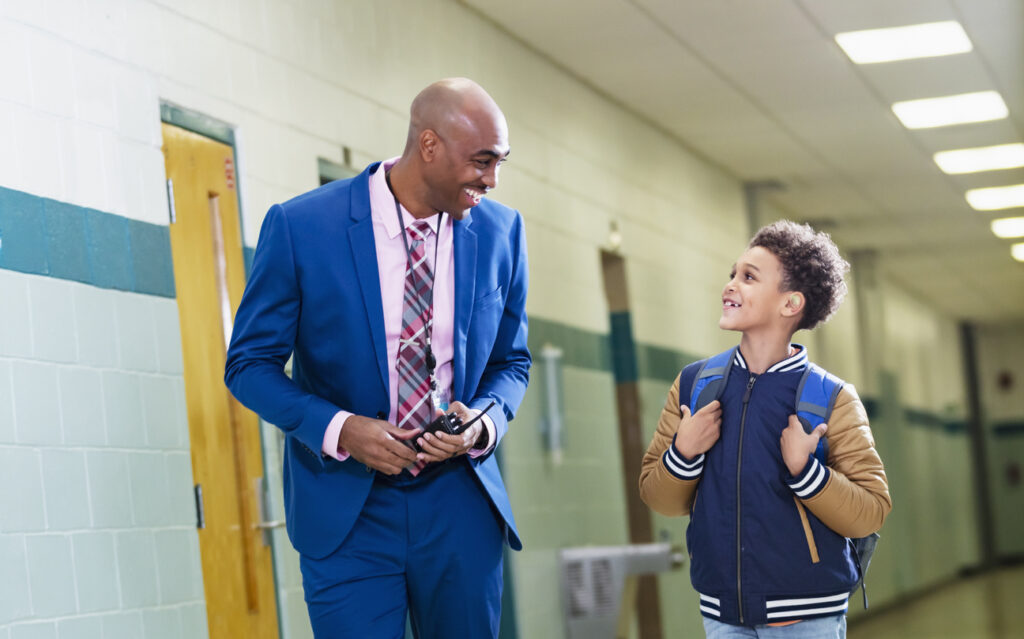Access the Takeaway 2 PLC reflection and discussion guide.
When I talk to educators about the power of expectations, I understand why their reaction can be frustration. Saying “believe students can do it and they will” can feel like magical thinking, underestimating the work, strategy, and determination that actually goes into making it happen. I had a poster on my classroom wall that said, “Opportunity is missed by many because it is dressed in overalls and looks like hard work.” Just saying “ expect more” can feel like it skips the “hard work” part of the equation.
Yet, across these conversations, and when I think about my experience as a teacher and a learner, it does seem like expectations can have a magical power. Expectations do not automatically lead to outcomes, but they can launch a chain of events that lead to remarkable achievement and create a virtuous cycle of increased achievement and belief in our capacity to learn. Doing a hard thing can create a counter-narrative to the voices we all have in our heads telling us “you can’t” or “not you.” The conversations also showed me that the opposite of the inspiring “I realized I could do it!” story was not a neutral experience. Being told we are not capable of something, or seeing others being asked to do something we are not asked to do, gives direct ammunition to our worst fears about ourselves, which can create a downward spiral of our achievement and sense of our capacity to learn.
These conversations also made me see that students give priority status to the signals they get from teachers about their potential. Even a teacher’s smallest actions and words carry such weight — it is a power educators must wield with care in every interaction.
If we know expectations can fuel powerful achievement and shape our identity as a learner, then it is a matter of both justice and sheer practicality that we must hold high expectations for every student — particularly students who have been marginalized and students who are furthest behind. Yet our assumptions and biases about our students’ potential influence how we distribute the supercharge of high expectations vs. the “not you” undercut. We all make assumptions about other people, particularly people who are different than we are. Having assumptions and biases does not make us bad, it makes us human. But as educators, letting those assumptions and biases shape our actions has harmful effects. The good news is, we can change our personal patterns. We can build our awareness of the unconscious; we can notice a pattern and change it.
This idea that our genes are not predetermined, that potential is not fixed, that we cannot know in advance what anyone is capable of — it applies to us as a community as much as it applies to us as individuals. We cannot know in advance what kind of world we can create together. Thinking about this makes me unbelievably excited to see how we can defy our perceived collective limits. To build that world, we need everyone’s contributions. We’ve missed out on too many great ideas for far too long.
Changing expectations of others and ourselves is hard, but we can do hard things if we believe we can do hard things.
As leaders think about how to use time, energy, and money wisely, here are some actions this takeaway points toward:
- Invest in creating a culture that makes it both safe to talk about where expectations may slip and commits to dismantling those patterns. Model this commitment through self-work.
- Make sure every student has access to on–grade level instruction supported by quality materials.
- Provide professional learning for teachers on the impact of expectations and incorporate into ongoing structures (e.g., PLCs) the work of noticing biases and interrupting the impact.
- In the staffing model and schedule, support time for principals and coaches to observe instruction with attention to expectations for students, particularly students who have been historically marginalized.
Here are a few resources relevant to this takeaway:
- In The Opportunity Myth, TNTP shares what they learned about educators’ choices and expectations for students by following nearly 4,000 students in five diverse school systems.
- The Disrupting Inequity Toolkit from UnboundEd contains ready-made presentations and support resources to facilitate conversations about race, bias, and prejudice within a learning community.
- The Assignment Review Protocols from TNTP can be used to assess whether an assignment gives students the opportunity to meaningfully engage in worthwhile, grade-level content. In addition, TNTP’s Student Work Library helps educators learn how to distinguish between low- and high-quality assignments.
- In The Power of Teacher Expectations, Education Next presents the findings of a study on the effects of differences in teacher expectations on students’ likelihood of completing college.
- Here is a five-minute video on the Pygmalion Effect and the power of positive expectations.
- This blog from Student Achievement Partners explores how to create a culture that facilitates powerful learning for all learners.
What else would you add? Would love to hear your thoughts by email or through our social channels using #RethinkingIntervention.




